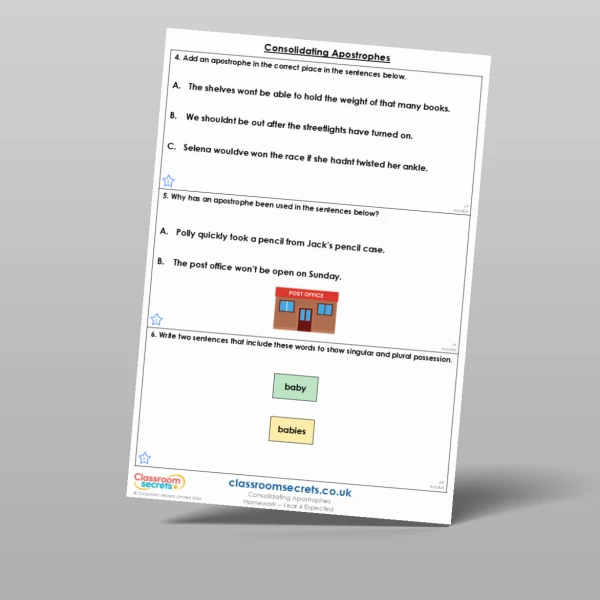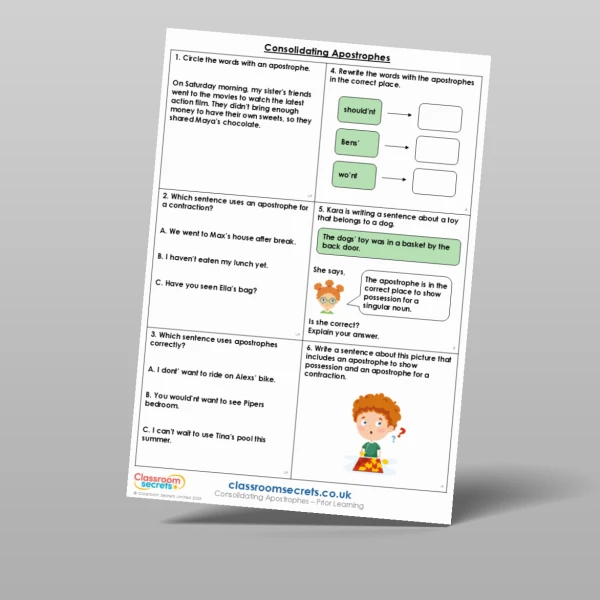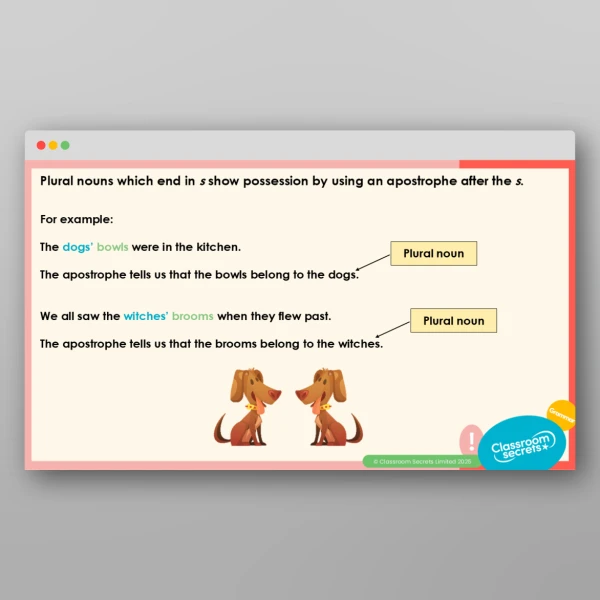

Use our Year 2 Consolidating Apostrophes Homework to revisit using apostrophes for possession or contraction. This resource is differentiated three ways, with three questions at each level. Pupils will select words to complete sentences, identify words that can be combined to make a contraction and identify when to use an apostrophe correctly.
This worksheet could be used as an extension, intervention or sent out as homework. The possibilities are endless!
Curriculum Objectives
- Learning how to use both familiar and new punctuation correctly including: apostrophes for contracted forms and apostrophes for the possessive (singular) / Apostrophes to mark where letters are missing in spelling and to mark singular possession in nouns [for example, the girl’s name] / Terminology for pupils: apostrophe
Tags
Consolidation
Summer
2G5.8
Year 2 Consolidation











